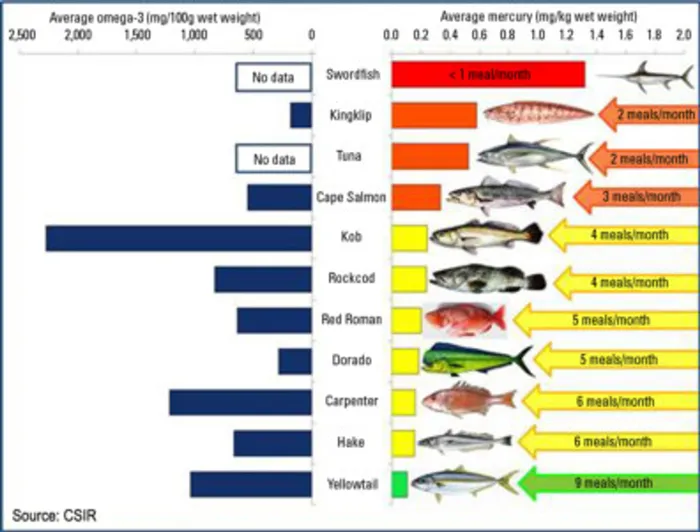Guide to discern ‘potent’ mercury levels in fish

Top of the list for high mercury content are swordfish, which Newman recommends should be restricted to just one portion a month. Top of the list for high mercury content are swordfish, which Newman recommends should be restricted to just one portion a month.
Durban - Mercury, a potent neurotoxin, accumulates naturally in many fish South Africans love to eat – but no one has yet worked out just how much of this toxin is found in local fish.
Now marine scientist Brent Newman, a principal researcher at the Council for Scientific and Industrial Research (CSIR) in Durban, has embarked on a project to do just that. After nine months into the three-year project, Newman has come up with a preliminary table of the mercury content in 11 fish that South Africans often eat, and made recommendations on the safe amount that can be eaten of each in a month.
Top of the list for high mercury content are swordfish, which Newman recommends should be restricted to just one portion a month. This is followed by kingklip and yellowfin tuna, which should be restricted to two portions a month. Cape Salmon is next, with restrictions of three portions a month, followed by kabeljou and rockcod, (four portions); red roman and dorado (five portions); carpenter and hake (six portions) and yellowtail with nine portions a month.
Mercury occurs naturally in the air, soil and water. It is also released by human activity, especially from coal-fired power stations and mining for mercury and gold.
The World Health Organisation lists it as one of the top 10 chemicals “of major public health concern”. Exposure to mercury can damage the nervous system, lungs, kidneys, skin and eyes. It is particularly harmful for unborn babies and very young children.
When fish feed, they absorb mercury which builds up in their flesh over time.
“The amount of mercury depends on the physiology of the fish, and how long they live. It is not necessarily the big fish that have a higher mercury content, although that does tend to be the case. The mercury content in kingklip was quite a surprise for us. It is a fish a lot of us eat quite often.”
Newman had coupled the mercury content with the omega-3 fatty acid content of each of the 11 fish. These fats, which the body cannot manufacture but has to get from food, are essential for proper functioning of the body. Fish are high in omega-3 fatty acids. Of those Newman has tested, the fish that scores best on high fatty acid content coupled with low mercury content is yellowtail.
Newman stresses that he does not want his research to make people stop eating fish, as it is an excellent source of high quality protein and one of the best sources of omega-3.
“The point is not to scare people, but to provide them with information so they can make informed choices, so they know to eat some fish sparingly and others more often. People must be encouraged to eat fish, but they need to be able to work out how much. For instance, I eat fish only about three times a month, so at that level of consumption I could eat any of those fish on the list and it would not harm me,” Newman said.
Newman buys the fish he tests at shops in Durban, and will move to Cape Town to test species, such as snoek, that do not occur in KwaZulu-Natal. Because some shops mis-label fish, he buys whole fish so he can be certain of the species.
He now will also test fish for seasonal differences in mercury content.
The Mercury